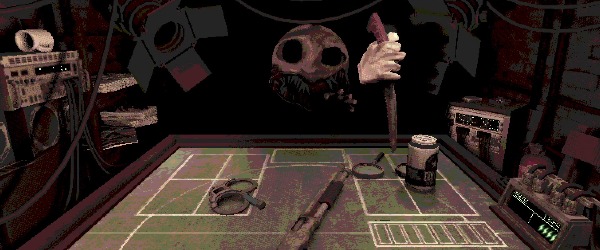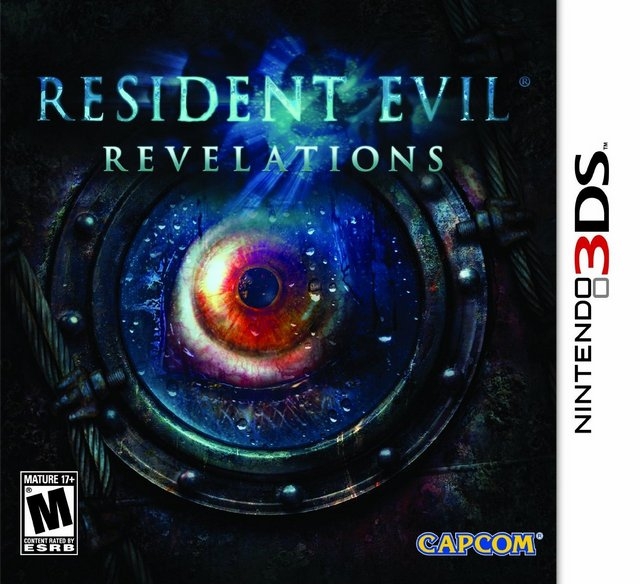
Resident Evil Revelations - Review
by Daniel Share-Strom , posted on 20 February 2012 / 9,898 ViewsLook, let’s just cut right to the meat of the Jill sandwich here: Resident Evil Revelations is a game you can sink your teeth into. It layers a delectable amount of graphical polish on top of a beefy, action-packed showpiece for the technology of the 3DS, and tops it all off with just the right amount of aged, B-movie cheese. Toss in a side of unhealthily addictive multiplayer, and you’ve got one heck of a value meal.
From the moment that Jill Valentine sets foot on the ominous seafaring vessel called the Queen Zenobia, the game feels at once familiar and brand new. The over-the-shoulder viewpoint introduced in Resident Evil 4 does nothing to make you feel as empowered as it did in that game. A storm rages as you explore the filthy, rusted deck. You move slowly, carefully inspecting every detail. A door with a glittering lock beckons you. Your methodical pace means your senses are ill-prepared for the tidal wave that strikes the boat, jolting you in real life and nearly throwing Jill overboard. It’s a red herring, but a warning that, unlike its last two immediate predecessors, this game is intent on scaring you. As you enter the dark ship and explore the dark, grimy passages, your view on either side is obscured by shelving units and shipping crates—we wouldn’t want you seeing what’s around the corner, would we?
Jill’s partner, Parker, deems this the appropriate moment to tell you that he feels that something else is there with you. Entering the next room, you notice something moving from behind a shelf of boxes, but by the time you get there, it’s gone. The next door leads to some stairs with an air vent above—one in which something is banging and smashing something fierce. Blood can be seen dripping from the broken duct at the bottom of the stairs, and a body drops unceremoniously out of it when you approach. Parker notices something under a floor grate—a mutated body.
Luckily, it is not fellow BSAA agent Chris Redfield, who it is your mission to make contact with, but worryingly, whatever killed this person is still around. A chilling sigh comes from behind you, and out of the grate rises a seven-foot-tall humanoid that appears to be made of water, and is clearly not there to make friends. You fire two shots—miss, miss! It grabs you and uses its revolting tongue to attempt to suck out your life. You rapidly mash the Y button to kick it off. As it slowly lumbers back toward you in an attempt to bludgeon you with its seashell-like arms, it takes some deft manoeuvring within the tiny space as well as two clips from your handgun before the creature finally dissolves into a watery, bloody blob and disappears.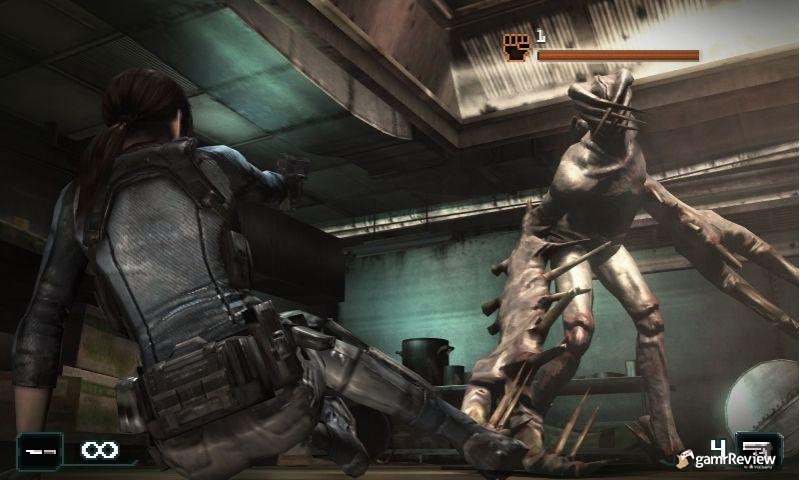
Welcome to Resident Evil Revelations.
This game is successful largely because it merges the fear of the unknown and occasional jump scares of the original Resident Evils with the superior controls and exciting gunfights of the more recent entries in the series. Unlike RE5, which ushered you from climax to climax with little time to breathe in between, Revelations is constantly dangling in front of you the threat of an enemy encounter, and often makes you feel completely helpless. An early chapter sees Jill stripped of her weapons and forced to creep past a boat full of hidden monsters to survive. It is that type of terrifying situation upon which the series was founded. Capcom has not forgotten the grand set-piece battles that made 5 the series’ best-selling entry—a lab filled with invisible versions of a classic enemy comes to mind—but these encounters serve mainly to validate your fears; horrifying infected monstrosities were indeed lying in wait.
Memorable sequels, however, do not rest on their laurels. They take what worked, offer up natural extensions to the formula, and throw in a few new ideas we never knew we wanted. Underwater sections offer a new level of anxiety, as not only are your weapons useless, and not only can attacks now come from any angle, but there is the constant urgency of finding a safe spot to come up for air. A new tool called the Genesis device allows you to scan the area for extra items, and scanning enough enemies will earn you a healing herb. As you cannot hold a gun and the Genesis at the same time, in the heat of a fight, you’re forced to weigh these potential advantages against the odds of getting your face bashed in. Rounding out the new features is the fact that weapon upgrades can now be swapped between guns at any point, allowing you to customize your load-out for any situation. This is helpful because you can only hold three guns at a time, while the rest wait for you in storage boxes strewn throughout the game.
Outside of the main gameplay, what makes this game truly stand out is its thoughtful implementation of just about every feature of the 3DS. Of particular note are the controls. The touch screen serves as a constant map while also allowing for quick inventory management that does not take you out of the action. You can aim with the Circle Pad, the gyroscope, or even dual-analog controls if you have the luxury of a Circle Pad Pro accessory. If you use the gyro or Circle Pad Pro, you can even (*gasp*) move and shoot at the same time, a concept the series is notorious for shirking!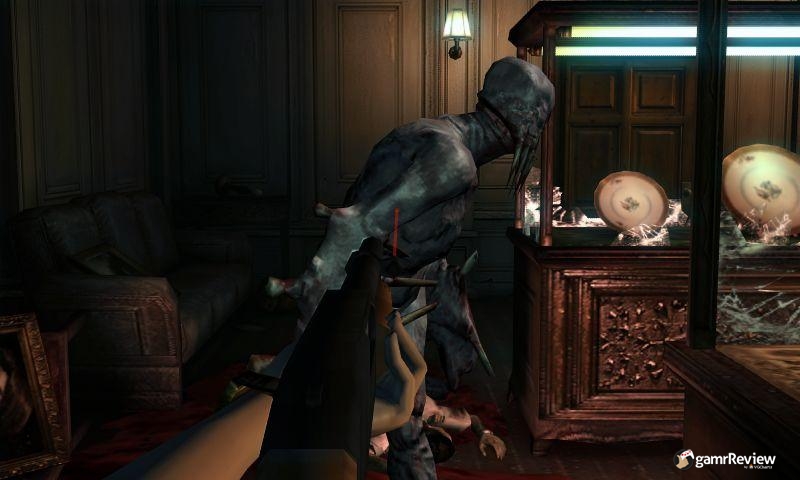
The game also makes full use of the 3DS’ various networking capabilities. Not only can you receive extra supplies and missions by Streetpassing with other players, but Capcom has implemented an extremely addictive multiplayer game mode called Raid Mode. The objective is simple—pick a character and a stage and get to the exit. You have to defeat all enemies in one area to get the key that unlocks the next. Playable in single-player, local multiplayer, or online, this mode is perfect for short bursts of shoot-em-up action. After each round, you get experience points based on how well you performed, and levelling up allows you access to the stronger weapons. You also get an equal amount of currency with which to buy weapons, upgrades, extra storage space, and ammo. There are 21 stages full of carnage like this, and two separate difficulty levels. Couple this variation and the constant advancement with the different experiences you get by playing through them with different characters, guns and players of a different play styles, and you can see that this ‘extra’ mode holds more value than the complete standalone Resident Evil: The Mercenaries 3D released last year.
All of the terror of the campaign and action of Raid is supported by mostly stunning presentation. I’ll preface it by reinforcing that the 3DS is no Vita when it comes to processing power, but this is the title that demonstrates that the system is more than capable of handling a realistic-looking game. Most environments are small, and characters are made of fewer polygons than their counterparts on HD systems, but at first glance you’d be forgiven for mistaking this for Resident Evil 5. The 3D effect is generally more subdued here than in many 3DS games, but there is the option to crank it up past Nintendo’s recommended limit, and this makes the game seem very raw and in-your-face. The game sounds great, too. The voice acting is just as cornball as ever, but the enemy utterances and ambient noises really draw you in. I guarantee that, after playing Revelations, you will never hear the word ‘Mayday’ ever again without shuddering.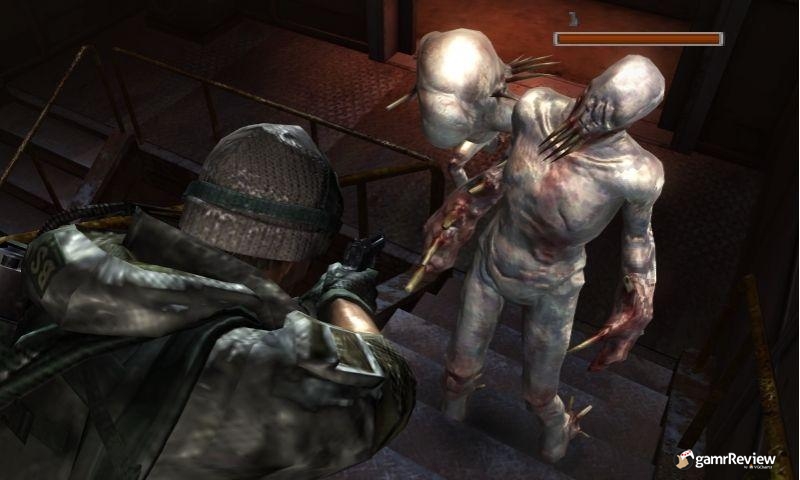
In terms of performance, however, some slight chinks in the armour do start to show. Usually, the game maintains a smooth, useable framerate, but when you enter an elevator or other room that is designed to mask a loading time, the game will often come to a screeching halt, moving forward at what can almost be called a slideshow pace. This never happens in areas with enemies, so it doesn’t hurt your progress much, but it is jarring when it occurs and abruptly disrupts the level of immersion. Also, like the T-Abyss virus that grants the victim awesome new powers at the expense of their life, turning on the ‘Strong’ 3D option will quickly kill your 3DS battery. Plug it in when playing this way.
As far as I’m concerned, this game has the best value of any 3DS game on the market. The campaign takes about twelve hours to complete the first time through. After one playthrough, you unlock New Game+, which lets you carry over your upgraded weapons, and Hell difficulty, in which one basic hit from a standard enemy is nearly fatal. That’s not to mention Raid, which I’ve played for more than ten hours and still feel like I’m just getting started.
As a portable game divided into many short, cliffhanger-infused chapters, Resident Evil Revelations is a satisfying take-out experience. If you’re still not convinced, try a bite of the free demo now available on the e-Shop. It is nothing short of astounding that Capcom was able to add so many great new elements to the recipe while maintaining the series’ classic flavour. Order it.
This review is based on a retail copy of Resident Evil: Revelations for the 3DS.
VGChartz Verdict
9
Outstanding








